Executive Summary
The major focus of this report is finding viable and effective marketing strategies for the client website to implement for the purpose of powering their business and strengthening its market presence. The aforementioned strategies are identified with the help of detailed and thorough analysis of the website of the major competitor website and through drawing comparisons between the two channels. In this report, the digital channels are analysed and evaluated according to a specifically selected set of criteria that are chosen based on the previous findings of digital channel analysis research. In that way, first of all, the criteria according to which the two websites will be assessed are outlined; secondly, the analysis of each of the websites is conducted separately; thirdly, the characteristics and features of the two channels are presented in a comparative table for better visibility; and lastly, the recommendations are offered to the client website as to the ways of improving their performance. The entire report is supported with a set of visual aids such as photographs, charts, and statistics used for the demonstration of the issues under discussion.
Introduction
The primary paper of this analysis report is to compare the client website and the major competitor website for the purpose of providing the client with valuable information concerning the strengths and weaknesses of their online marketplace in comparison with the strategies and approaches employed by their competitor marketplace. This type of analysis is essential in online marketing as it provides businesses with detailed information about versatile aspects of their performance, as well as their customers’ perceptions of their brands, products, and the way they are presented.
Marketplace analysis is widely recognised as the best and most effective strategy allowing the marketers to determine the appropriate digital marketing strategy for their business, taking into consideration the capabilities of the competitors (Chaffey, 2011). In order to help the client gain awareness of the means necessary for the development of a maximally efficient marketing plan, the two marketplaces will be analysed according to a set of criteria. The latter aspects will be specifically selected to match the types of activities and products the client and the competitor websites market. The points of difference between each website will be named and discussed. Also, the primary focus of this report and analysis will be the ability of both digital channels to ensure positive customer experience by means of employing the respective CX techniques and strategies because knowing that both businesses (client and competitor) are involved in retail, it is evident that the consumers are their primary sources of income.
Digital Channel Analysis Criteria
Digital channels carry out a board scope of tasks and functions; and just like the operations of any part of a business, the performance of digital channels needs to be evaluated. The major purpose of such evaluation is for the owners of the business based or related to a given channel to learn about its stronger and weaker aspects. Of course, strengths and weaknesses are relative notions, and thus they are usually determined by means of comparing and contrasting between several digital channels of a similar type. In most cases, the comparisons are drawn between the websites that compete with one another for the same customer segment. Such comparison can be carried out for the purpose of establishing the position of each website as a business performer.
There exists a wide range of criteria according to which websites are evaluated and assessed. Naturally, the criteria tend to vary depending on the purpose of evaluation, as well as the type of website under analysis. In that way, a website that was set up for the educational purposes will be assessed in regard to the quality, amount, and accuracy of the information it provides, and a website that serves medical purposes will also be assessed in terms of the accessibility and comprehensiveness of the information offered to its users. Also, all of the websites are assessed based on the ease of navigation and user experience.
The two websites under analysis in this report are retail channels whose primary purpose is to market the products of their owners and provide the users will all the necessary information about them. As a broad and general set of criteria suitable for the assessment of most websites, Moustakis, Litos, Dalivigas, and Tsironis (2004) suggested paying attention to five basic aspects that are:
- Content
- Navigation
- Design and structure
- Appearance and multimedia
- Uniqueness
In turn, each of these criteria was subdivided into several subcriteria in order to define the points and guide the website analysis. To be more precise, content is assessed based on such aspects as reliability, subject, utility, completeness, and syntax; navigation is evaluated according to its convenience, search, ease of use, tools and means present; the structure of a website depends on order, site map, software requirements, loading speed, and browser compatibility, appearance is critiqued based on the multimedia used, graphics, and readability of content; and uniqueness is determined by the aesthetics of the content presentation, design characteristics, and uniqueness of information provided (Moustakis et al., 2004).
Moreover, when it comes to the retailers’ websites, in particular, Song and Zahedi (2005) emphasised that it is critical that the website is focused on the following set of features:
- Product promotion that includes recommendations of various products, gift certificates, and announcements about new products;
- Purchase facilitation that involves visual stimuli such as pictures of products with a detailed description, the explanation of payment and shipping options, and FAQs;
- Service information that entails customer security and privacy protection, warranty, and assistance with purchases.
However, the latter criterion does not apply fully due to the fact that the two websites under analysis exist for the purpose of promoting their products and educating the consumers about them but not selling specifically. In that way, in a more general manner, the criteria offered by Moustakis et al., (2004) and Song and Zahedi (2005) could be grouped into 4 basic and broad characteristics that are:
- Website design
- Website convenience
- Product merchandising (Bezes, 2009).
The latter set of criteria will be used for the analysis of the customer and competitor websites. For better precision and a deeper analysis, the four main criteria will be subdivided into underlying characteristics. In other words, website design will include the analysis of appearance and multimedia, uniqueness, and content; website convenience will involve the ease of navigation and structure; finally, product merchandising criterion will be comprised of such aspects as product promotion, description, and service assistance.
Analysing the websites that are focused on marketing and promoting consumer products (in the case of the customer and competitor websites these are the luxury alcoholic beverages), it is important to take into consideration the determinants that contribute to overall customer experience and define the potential impressions and attitudes the clients may develop while visiting the websites.
Competitor Analysis – Jack Daniels
Website Design
The designers of Jack Daniels website made sure that the entire home page was filled with content and multimedia. In particular, the website uses large background pictures of several different kinds – an interior photograph depicting original burning charcoal and a couple of still life pictures focusing on the product and stylish décor. The colours used are warm browns and fiery reds with a neutral dark-grey background and refreshing touches of lime-green. The colours and images used to create a welcoming atmosphere and a calming mood that the marketers want to be associated with their product (See Pictures 1 and 2).
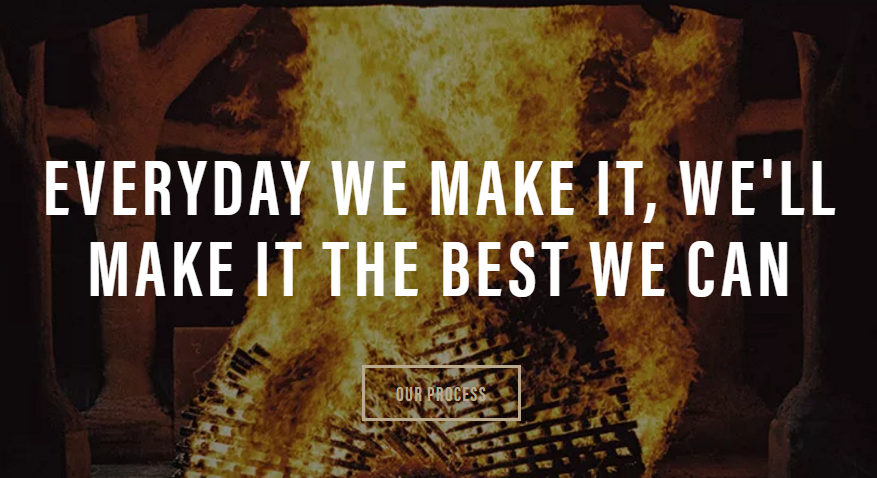
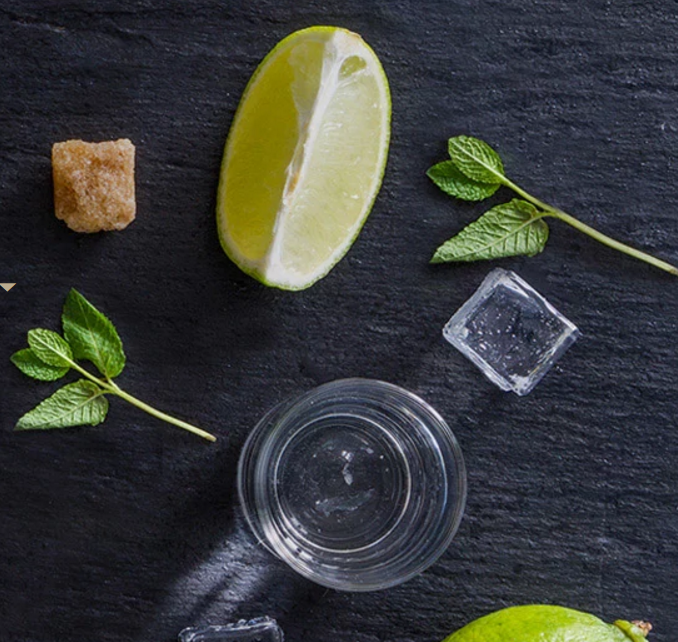
Moreover, the designers of this website also added some educational content such as the history of the brand and a time-lapse video of the preparing of charcoal for product creation. The uniqueness of the site is facilitated by the “Find your mix” option where the customer experience is boosted with the help of the “Recipes” bar where the potential clients can browse specific drink recommendations based on the individual requests (See Picture 3).
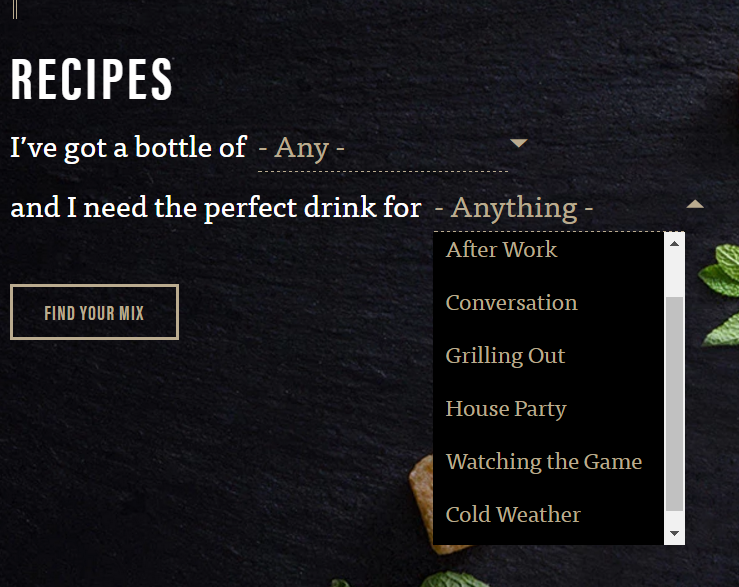
Website Convenience
The website has a very convenient and clear layout with all the necessary information with the addition of educational materials and interesting facts. The website offers its users separate sections exploring the brand history, the process of making the products, the catalogue of products, and recipes. Additionally, the users can access such units as “Terms of Use”, “FAQs”, “Linking Policy”, “Visit Us”, and “Pressrooms”. Also, there are several ways in which the website users can navigate and find them.
Product Merchandising
The four main share buttons provided for the users at the bottom part of each page allow the promotion of Jack Daniels products via Facebook, Instagram, Twitter, and YouTube. Moreover, the clients are offered a full list of products of Jack Daniels with tasteful promotional pictures and separate “Learn more” buttons (See Picture 4).
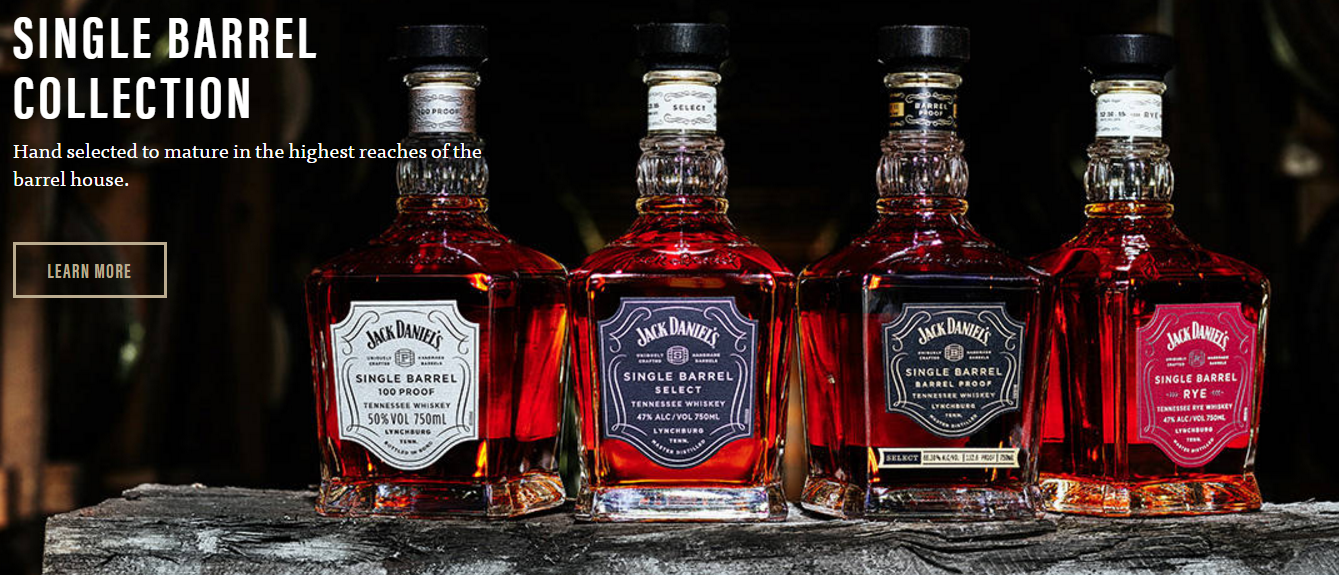
In that way, it is possible to notice that the visual appeal is emphasised in the introduction of the product selection. In other words, it looks like the competitor marketers focus on attracting their clients with beautiful product images instead of an elaborate description of the product quality. This could be the case because Jack Daniels already has a very strong brand reputation, and thus relies on the widely recognised appearance of the products as the major point of difference, boosted by the stylishly made photographs. Jack Daniels pursues the reputation of a luxurious drink associated with the class and social status of its clients.
Client Analysis – Johnny Walker
Website Design
In terms of colours and overall design, the client website is rather formal. In addition, when it comes to the density of content and multimedia, the website is not crowded compared to the competitor channel. Moreover, Johnny Walker designers chose not to use any kind of specific background, and therefore the products and information are presented on a white or black background. This approach creates the impression of cleanness and precision. Also, the photographs of products are pristine and sharp; it looks like the intention was to make them stand out on a plain white and black background. The contrast between the colours used (reddish browns of the whisky bottles and black and white base) draws that users’ attention to the products without distracting them with the assisting content (See Picture 5).

Website Convenience
The information offered on the home page of this website covers such topics as product description, the brand history, and the general information about whisky. In that way, the product marketers attempt to enable their clients to make informed decisions concerning the specificity of the product.
The website contains only a few tabs – “Our whisky”, “Whisky knowledge” and “The world of Johnny Walker”; the information about brand heritage is presented separately at the bottom of the home page. Additionally, they share buttons allowing the further promotion of the brand products is the same as the ones used by the competitor website. Also, the information offered via the tabs located at the top of the page can be accessed in a variety of ways.
Product Merchandising
The website does not offer a “Select your mix” option, but its description of each drink, as well as the whisky colours, is very extensive. Moreover, the site also has a “Buy” button that directs the users to a trusted website selling Johnny Walker products (See Picture 6).
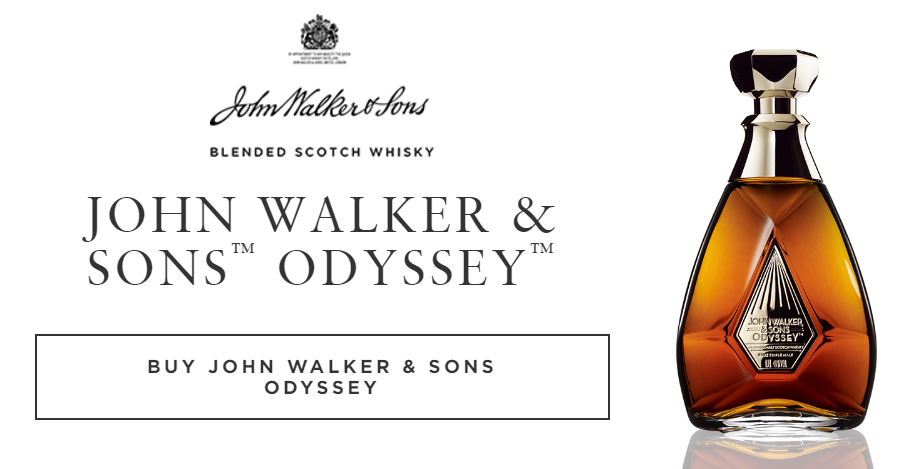
Each of the products contains a full and detailed profile with several stylish and appealing photographs intended to attract the users to the marketed types of whisky and encourage them to make a choice and purchase.
Comparison Table – Jack Daniels vs Johnny Walker.
Recommendations
5S Objectives
According to Swan (2016), the 5S objectives include such components as Sell, Speak, Serve, Save, Sizzle. Following this set of features, it is easy to notice where the two performers under review excel and where their weaknesses show. To be more precise, Johnny Walker website is successful at selling and speaking about their products selection by offering a link using which the consumers can purchase the branded goods and by providing a very detailed product profile for each specific type of whisky. The website serves the clients educating them about the brand history and assisting at choosing flavours. However, adding a more customised approach, such as the “Select your mix” option of Jack Daniels could boost the consumer interest and purchase readiness of the clients.
In addition, in terms of saving and sizzling, the company is recommended to boost the interactivity and engage the clients and also, it could boost the brand popularity if the marketers could make an emphasis on a tendency to embrace sustainable practices and use safe artisan resources. Due to the popularity of this issue in the contemporary world, it is possible that the channel, as well as the entire business, could benefit from this solution significantly.
SMART Framework
According to Fill (2009) and Chaffey and Smith (2013), the abbreviation SMART objectives is based on the inclusion of its essential characteristics; in other words, the objectives are expected to be specific, measurable, achievable, relevant, and timed.
As specified by White and Uva (2000), the objectives should be aligned with the core values, mission, vision, and philosophy of the business, Johnny Walker channel is recommended to add the quality feedbacks or advice by the renowned whisky experts for the purpose to confirm the product quality. Moreover, the quality improvement is to be scheduled specifically based on a timed plan allowing following and measuring the progress. An additional way of measuring the results would be the estimation of traffic and sharing dynamics before and after the addition of the new options and information. For a better impact, it is important to establish a clear point of difference defining the channel from its competitor. Jack Daniels site uses an informal approach and creates a welcoming atmosphere. As a point of difference, the designers of Johnny Walker website could add professional and scientific approach emphasising the focus on quality and thorough expert knowledge as the basis for product development.
Also, in terms of selling, the new approach could involve the initiation of a discount system or special offers in order to attract consumers. For that purpose, the product promoting campaigns could be hosted on the website and also posted on YouTube and Facebook for better visibility, before and after which the consumers purchase intention could be measured at different periods (a month before the launch, a week after, a month after, and three months after). The measures could be based on the consumers attending (assessed via website traffic analysis and sharing), the expressed interest, and the expressed readiness to buy (assessed via a survey) (Hosein, n.d.).
Conclusion
To sum up, the present report was conducted for the purpose of reviewing and assessing the client and competitor websites Johnny Walker and Jack Daniels that are focused on promoting and marketing different kinds of luxury whisky. Over the course this report, the two websites were assessed and evaluated according to a uniquely selected set of criteria suitable for the specificity of the channels under analysis and based on the previous findings of marketing research papers. The report showed that for the most part, the two websites carry out a range of very similar functions and offer the educational and merchandising information using the same approaches such as detailed product descriptions, the explanations of the preparation processes, and historical background of the brands.
However, in addition to a multitude of similarities driven by the focus and kinds of businesses to which the two brands belong, there exists a set of differences between the sites. In particular, one of the most noticeable differences between Jack Daniels and Johnny Walker sites is their design. Namely, while the former uses an informal approach creating a homelike and cosy atmosphere, the latter relies on a more formal layout with a strict colour scheme, high contract, and a minimalistic design with very sharp pictures of the products placed right on the home page for the clients not to be distracted by all the additional information and move to review whisky right away. One of the benefits of the client website is its extensive approach to product presentation. Namely, the product catalogue offered on the website, the marketers provide the users with a very detailed and multilayered body of information, helping them make a choice. However, Jack Daniels offered a customised search based on the customer’s needs related to their drinks that is absent on the website of the client.
Based on the result of the assessment, the client channel is recommended to invest in the interactive practices and a campaign that would allow boosting the customers’ purchase intention and assess their engagement based on the website traffic and sharing dynamics. In addition, the client website is recommended to emphasise its formal approach to product promotion as a point of difference and add expert opinion and the information about sustainable practices involved in the production. The major strength of the client website is the “buy” button that could not be found on the Jack Daniels website. The client channel is recommended to add some discount options and special offers as a means to engage and attract more clients and increase its difference from the competitor channel.
References
Bezes, D. (2009). E-commerce website evaluation: A critical review. Web.
Chaffey, D. (2011). Online marketplace analysis for digital marketing. Web.
Chaffey, D., & Smith, P. (2013). Emarketing excellence: Planning and optimizing your digital marketing. New York, NY: Routledge.
Fill, C. (2009). Marketing communications: Interactivity, communities and content. New York, NY: Pearson Education.
Hosein, N. Z. (n.d.). Measuring the purchase intention of visitors to the auto show. Journal of Management and Marketing Research, 2-17.
Moustakis, V., Litos, C., Dalivigas, A., & Tsironis, L. (2004). Website quality assessment criteria. Proceedings of the Ninth International Conference on Information Quality (ICIQ-04), 59-73.
Song, J., & Zahedi, H. (2005). A theoretical approach to web design in e-commerce: A belief reinforcement model. Management Science, 51(8), 1219-1235.
Swan, S. (2016). A SOSTAC® plan example. Web.
White, G. B., & Uva, W. (2000). Developing a strategic marketing plan for horticultural firms. Web.